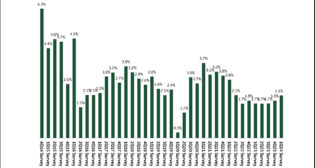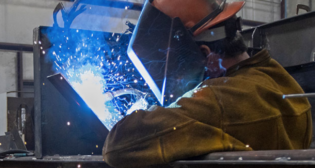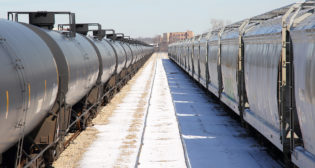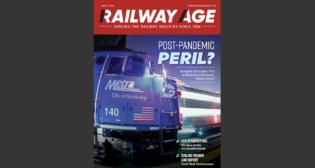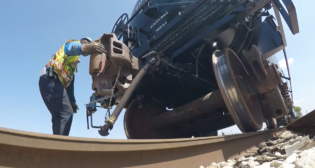
Financial Edge, June 2017: Call the bottom? Good luck with that!
Written by David Nahass, Financial EditorRecently, a rumor circulated in the railcar lease market that a Class I railroad had made an overture to a group of its operating lessors requesting that these lessors submit offers on cars currently on lease to the railroad.
The letter requested purchase options and potential reductions in existing rates for all railcars expiring from the date of issue through the end of the calendar year 2018. It was a blind, non-negotiable bid process covering a significant number of cars operating in various commodity services.
Class I railroads are among the savviest operators of equipment. It’s a natural thing; they handle and move more carloads than any other party connected to the railcar industry. So it is to be expected that they would approach the market aggressively to decrease costs in an environment where car demand is generally weak.
What is interesting about this event, however, is not a lessee’s request for a reduction in lease rates. The operating lessor community has been caught on that “Ring of Fire” rollercoaster for some time now. What is interesting is that by pursuing adjustments to lease rates and focusing on the option to purchase cars currently on lease to the railroad coming off lease through 2018, the railroad in question may have just called the bottom of the railcar market.
At the Rail Equipment Finance Conference 2017, the question of when the market will bottom was on everyone’s minds and lips, and, truthfully, with all of the talent and expertise crossing the stage over a three-day period, no speaker offered an answer to that question that was both concrete and evidentiary.
Calling a market bottom is a hari-kari assignment. That’s because too many things can happen in a dynamic, cross-modal and multi-industry market that may change assumptions and cast even the best prognosticator in the role of the charlatan.
In this case, the desire to reduce rates across all car types indicates a general sense that the market may have made a shift and is getting ready to rebound.
A targeted offer on mill gondolas (cars that haul scrap steel), for example, would indicate weakness in the market for scrap steel and a desire to shore up a market where profits were thin and expected to remain weak. Addressing the long-term weakness of this market would be prudent, reasonable and responsible. It shows opportunistic thinking and a commitment to the market.
But opening it up to all car types suggests that there is something for the railroad to fear about the future of lease rates and that now is the time to make the grab before the markets shift and lease rates start to rise.
Additionally, extending the window out through the end of 2018 shows that the railroad feels that the uptick in the market might actually be closer than we think. Asking for reductions on cars 18-20 months in advance of lease expiration is a significant request for a market that generally tackles renewals six months to one year in advance of scheduled expiration.
It may also suggest that the railroad expects new-car pricing to rise in the near- to intermediate-term. Railcar pricing has been sinking since the peak of deliveries and orders in late 2014 and early 2015. Lessors generally in certain markets (well, maybe most markets) have been feeling pain for some time. Nonetheless, it is unlikely that lessors would feel compelled to cut bait and exit markets they have committed capital to for the long-term.
Don’t agree? The history of the lease and ownership market for centerbeam flat cars, aluminum coal cars, 4,750-cubic-foot covered hopper cars and SD40-2 high-horsepower, six-axle locomotives shows that lessor ownership is not easily forgone. Next on the list: tank railcars acquired early in the crude-by-rail run-up.
So, has the market bottomed? The truth may be as easy as saying that while the market has not bottomed, it may just have reached a point where it does not have (much) further to fall. Even as the sand market picks up, rumors of other car types being parked remain rampant (and should be expected to increase).
Discounted pricing for off-lease cars just over a decade old are offered weekly. Not much of this is anything other than “new” news that sounds a lot like old news. If you grab while the grabbing is good. Perhaps it doesn’t matter whether the market is at the bottom or not.
Good wishes to both those lessors who ignored the offer to change their leases and those who did not in the hopes that their cars stay on lease. The one with the correct guess buys the first round.
